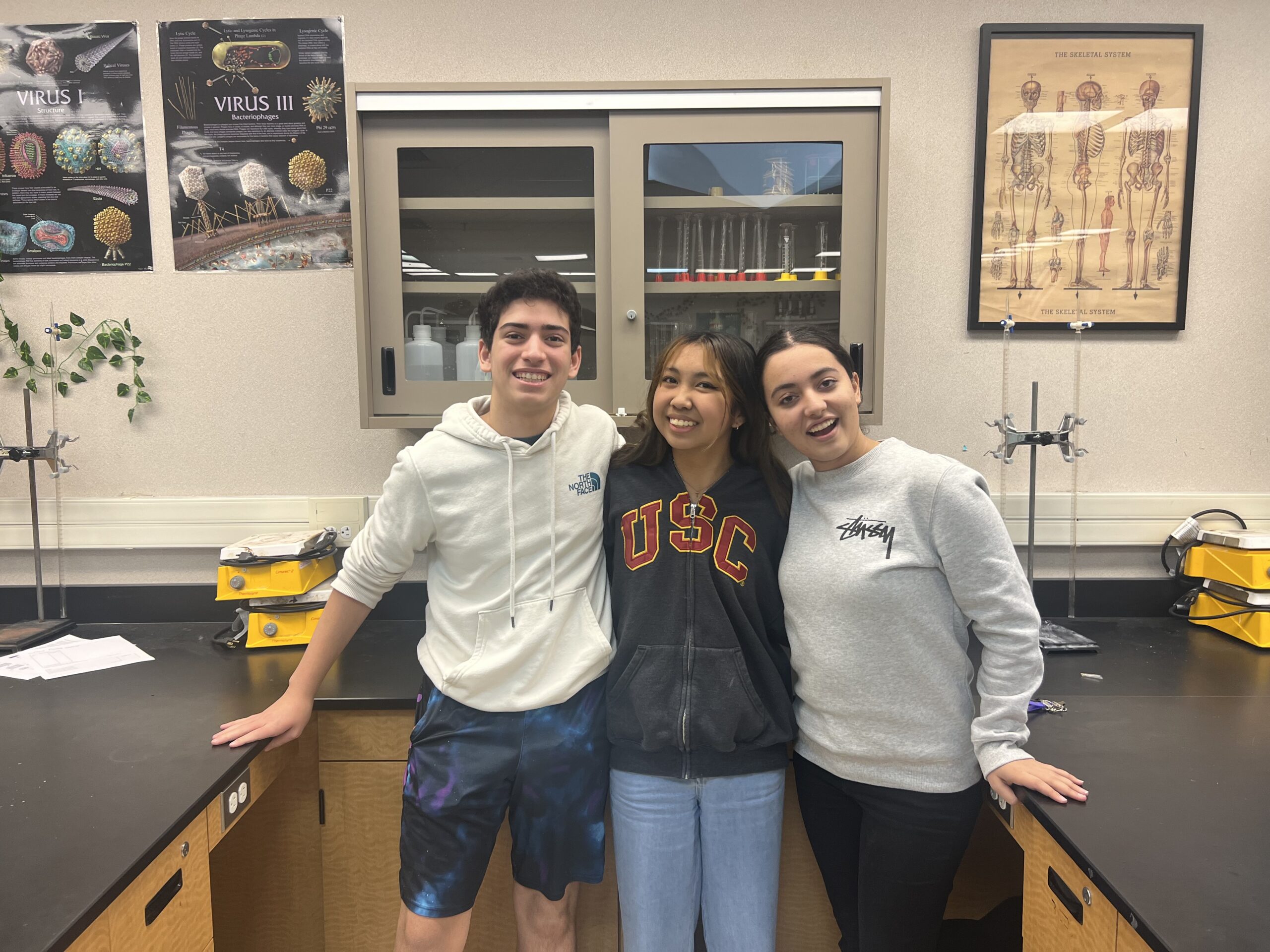By Cathi Douglas
When Tesoro High School junior Cassandra Mapanao and her teammates learned they won a recent science competition that pitted them against students statewide, it was good news indeed.
The $1,000 prize money and recognition are wonderful, Mapanao and her teammates say, but the fact that the competition awarded them for their persuasive abilities as much as their scientific savvy is perhaps as significant.
Mapanao, who lives in Trabuco Canyon, and fellow juniors Setayesh Assadzadeh-Nahvi of Mission Viejo and Dilan Mummert of Coto de Caza, all 16 years old, won the Create the Space / Shark Sessions Pitch Competition sponsored by California Life Sciences, the state’s most influential and impactful life sciences membership organization.
Contest inspiration
The contest was announced in the newsletter for UC Irvine’s nonprofit University Lab Partners research and education center, where Mapanao has participated in entrepreneurship and science camps.
Mapanao was immediately interested in pursuing a pitch for her current brainchild. She has been studying ways to manufacture and produce inexpensive cardiac stents from the myelin sheaths of fish instead of the expensive ‘balloons’ now used by heart surgeons worldwide.
“The current procedures can cost $50,000 for the materials and procedure,” she explains, “and the balloons must be replaced every few years…What I’m suggesting will be a one-time procedure that’s much cheaper.”
In fact, Mapanao ’s team says, their idea could revolutionize heart procedures, making them more affordable, efficient, and thus available to populations in underdeveloped countries and Americans with limited means.
Shark Sessions
Coached by New York-based mentor Ron Johnson of Triton Consulting, the team took a series of Shark Sessions, classes in networking, presentations, finance, product design and more to prepare their pitch.
“The whole purpose of the competition is to prepare youth to speak intelligently about their ideas and connect effectively with their peers,” Johnson says. “Ideas cost money. Cassandra is developing a prototype in the lab, but the team needed to know how much it will cost to produce.”
While all the students in competition have ideas to help other people, Johnson noted, Cassandra and her team approached their project with creativity, practicality, and vision.
“As entrepreneurial dreamers and creators, we can feel alone,” he observes. “Cassandra, Sety, and Dilan understand that as a team they can accomplish many things, tapping into one another’s ideas to accomplish any goal they want.”
“I’m very impressed with them,” he adds. “They inspire me and make me enthusiastic about the future.”
Yamilex Pena, program coordinator of Racial and Social Equity for California Life Sciences, says the organization, which provides support to companies from startups to large corporations, wants to recognize and nurture diverse talent among young scientists.
“The big need in life sciences is for impactful, life-saving discoveries that save lives,” Pena says. “If we truly want to see the life sciences sector become more diverse, we must reach out and invest in this new generation of students.”
The pitch contest is a key part of California Life Sciences’ efforts to recognize students’ innovation and entrepreneurship while providing a pipeline for collaboration – particularly for students from diverse backgrounds.
“The essence of the program is to help students feel more confident about sharing their ideas; to inspire and give students the opportunities to talk, practice, and gain the skills to speak publicly about their ideas,” Pena said.
A Tesoro dream team
Mapanao reached out to Assadzadeh-Nahvi and Mummert to join her team because each had specific skills necessary for the project’s success. By combining their talents toward a common mission, they also developed new skills in persuasion and presentation.
Together, the three students, who also compete in Tesoro’s STEM Olympiad in biology, chemistry, and anatomy, are dedicated to providing the populations of developing nations with much-needed access to and products for health care.
“Working together we were able to brainstorm our concept and artwork, as well as determining cost effectiveness and other utilizations for the products,” Mapanao recalls.
Today, Mapanao is an intern in the occupational health lab at UC Irvine and in the process of creating a prototype of her stent, which has been approved for a patent. In addition, she is completing a design for an upcoming international science fair and an MIT challenge.
Assadzadeh-Nahvi says she plans more research and notes that entrepreneurship excites her. Mummert is developing a product and is seeking to enter additional international and local competitions.
As for the prize money, Mapanao says, she will use part of it to support her school Olympiad and the rest for leisure activities, such as art supplies, while the others echo similar plans.
Mapanao , Assadzadeh-Nahvi and Mummert credit Tesoro chemistry teacher Shannon O’Malley with inspiring their scientific curiosity, offering insightful advice, and providing the motivation they needed to win the pitch award.
“We’ve all already taken her courses, but we still go to her for insights,” Mapanao says.
Statewide exposure
The California Life Sciences pitch competition exposed the trio to the way products are developed, funded, marketed, and eventually produced.
“The project and the programs we participated in will give me a leg up in making my own startup company,” says Mummert, the only one of the three who wants to pursue a non-medical field: law. “I’m in Model U.N. and I’m interested in politics, debate, and the real-world applications of the different aspects of our project.”
Assadzadeh-Nahvi, who plans to become a physician, says her eyes were opened to new possibilities outside the physicians’ realm.
“Ron taught me that you can have more than one job,” she says. “I can own my own company even if I’m a doctor.”
Their discussions about the medical industry and medical technology provided Mapanao with ideas about ways her prototype product can be used, as well as its key audiences, funding possibilities, and the best ways to sell the product to the panel of judges.
As for her future plans, she wants to either attend medical school or earn a Ph.D. so that she can pursue medical research.

